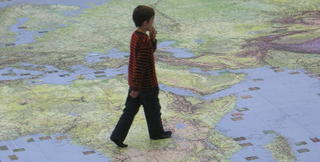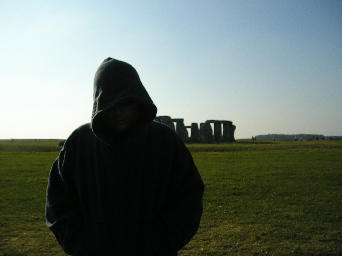Derry


On Saturday, I decided to leave Belfast for the day and visit Derry. I had read that Derry had a lot of historical things to see and do. Unfortunately, it was all closed the day because of the Relief of Derry commemoration.
As I understand it (actually, according to this book I have – The Struggle for Peace in Northern Ireland – a modern world study), in 1688 King James II of England (a Catholic) was causing concern among his Protestant subjects in the form of political and religious oppression. James started to ignore his Parliament and make his own decisions. Protestant nobles in England rebelled and deposed James in order to protect their (the nobles’) liberty.
The nobles asked James’ daughter Mary (a Protestant) and her husband William of Orange (from the Netherlands) to rule England instead of James. James fled to France where the ruler there, Louis XIV, was a close friend of James and a bitter enemy of William of Orange. Louis supplied James with troops and ships to gain his (James’) throne back.
Instead of invading England, however, James went to Ireland in March 1689, where he thought he could get the support of Catholics in Ireland and therefore increase his strength. Things went well for James and the Jacobites until he got to north-west Ulster. North-west Ulster (pretty much where Northern Ireland is today) held out against James and desperately awaited aid from William.
It seems that the key to James winning the rest of Ulster was Londonderry. As James approached, the commander of the city guard thought the situation hopeless and was ready to give up the city to James. At the last moment, thirteen apprentice boys shut the city gates as James’ troops approached.

From April 1688, until July 1689, Londonderry held out against James. This long siege gave William enough time to get his forces to Ireland. William also brought with him troops sent by Pope Alexander. William defeated James at the Battle of the Boyne in July 1690 (although the Jacobite forces – James’ – were not finally defeated until 1691).
The war ended with the Treaty of Limerick of October 1691. The terms were said to be extremely generous for the times (the terms allowed 15,000 of James’ soldiers to go to France, said Catholics in Ireland got to keep their land if they promised loyalty to William, and there were no extra limits to Catholics’ freedom of worship). Protestants, however, were unhappy about the treaty because they felt that it made their power (meaning land) less secure.
Confused yet? Particularly about the Catholic troops going to help the Protestants? Yeah, me too.
Anyway, every year in July, the Apprentice Boys of Derry hold a parade to commemorate the ending of the siege – the relief of Derry.

The city’s biggest parade of the year and I stumble into the middle of it.
And by big, I mean huge.
117 Bands.

10,000 Apprentice Boys.

The parade took more than two hours to pass any particular point and wound on for miles, around the city centre, and into three Protestant neighbourhoods, doubling back on itself several times.
Most of the bands were made up of drum and flute players…

…but there were several accordion bands. And if you’ve never seen a marching accordion band, you’re truly missing something.

Security was very tight.

Notice the band members carrying flags, the people on both sides of the street watching the parade, and the line of armoured police vehicles up the street (there are at least seven in this pictures).
At one point (at the city centre), the marchers had to march between riot shields.


The only problems I noticed, though, was this group of teenagers shouting rude things (and some of the marchers responding).

Notice the police, the teenagers with orange and green, the riot shields, and the tops of the marchers’ banners.
The parade passed into a Protestant neighbourhood.

Notice the bonfire, the red, white, and blue curbing on the streets, and the small flags hung over the streets.
It’s interesting to note that the painting of the curbing is not allowed in Belfast.

Notice the curbing on the streets, the flags of the marchers, and the mural on the wall. (‘Londonderry West Bank Loyalists Still Under Siege – No Surrender’)

This mural is particularly interesting – it shows Teddy Roosevelt.

Notice the curbing, the flags hung across the streets, and the boy on the left drumming on the utility box.

Marching out of the first neighbourhood.

Marching across the bridge – at this point, the marchers are passing one another. The marchers on the right side of the bridge are moving away from me, those on the left moving towards me and off to the left side. Notice the police vehicle in the centre.

Another section where the marchers pass each other. Notice the people lining the streets, the food stands, and the people parking on the grass. I was standing on a small hill facing the marchers. Just behind me, the marchers were passing into the second neighbourhood.

Marching into the third neighbourhood. Notice the flags hung over the street, the crowds lining the sides of the road, and the Ulster flags (white with two perpendicular stripes and a red hand in the centre).





0 Comments:
Post a Comment
<< Home